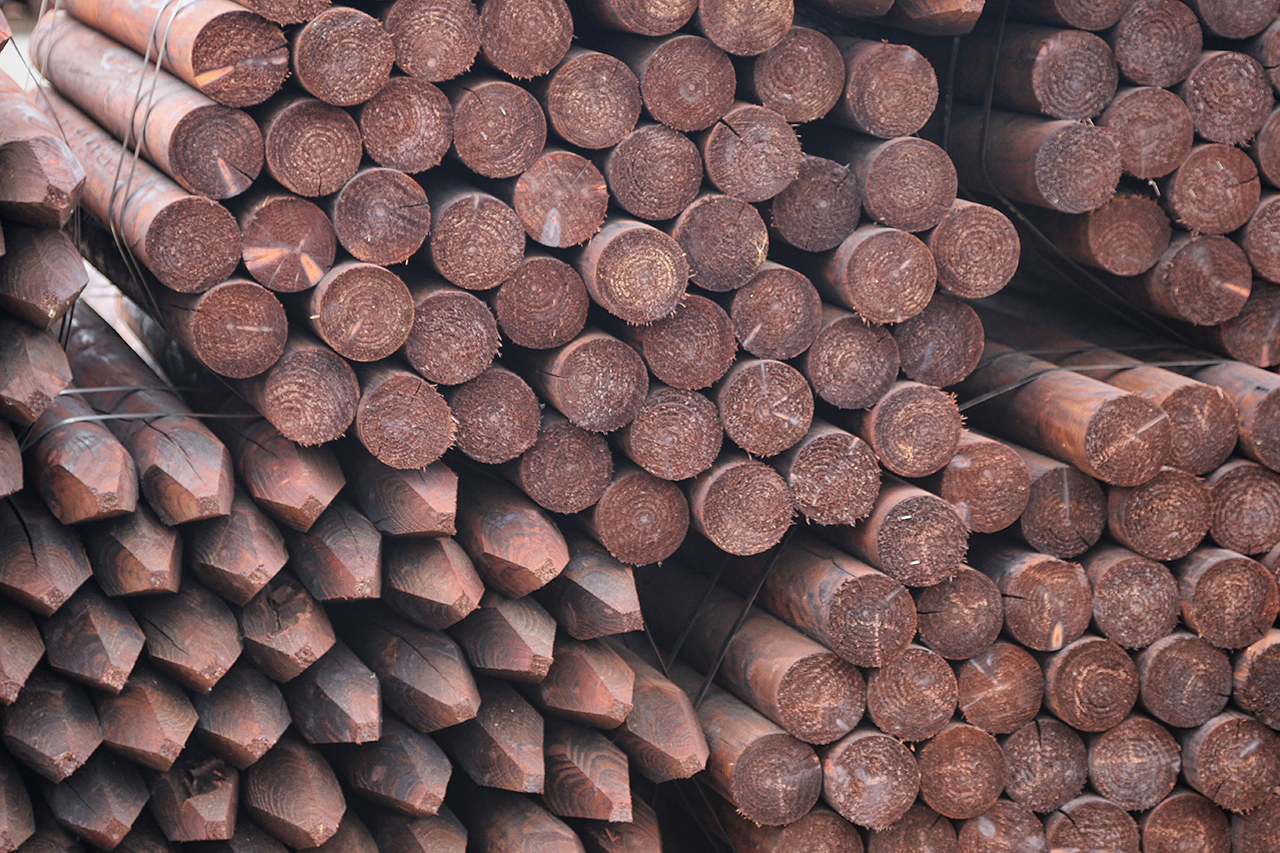Calders & Grandidge uses cookies to deliver superior functionality and to enhance your experience of our websites. Information about our cookie policy can be found here.
Continued use of this site indicates that you accept this policy.
Creosote

Pressure impregnation with Creosote offers the longest possible service life for all timber products
What is Creosote?
Coal tar creosote has been in use for over 150 years and has traditionally been used as a preservative for timber products as it deters wood-destroying insects and wood-rotting fungi better than any other wood preservative on the market.
Creosoting is the process of vacuum and pressure impregnation of wood with hot creosote oil.
Creosote oil is a quality preservative made from the distillation from coal tar; the coal tar itself is released from the coal during the coking process as part of the high oven process during the production of steel.
Applications
Creosote oil is used in fencing timbers (agricultural stakes, equestrian fencing and for use in country parks/ estates), railway sleepers and utility poles.
To ensure maximum service life is achieved, the sapwood in the timber must be fully penetrated with creosote.
This can only be achieved by means of an industrial process using vacuum and pressure treatment plants such as those operated by Calders & Grandidge.
You may see creosote substitutes that are aimed at the domestic retail market in some DIY stores but they do notoffer the same preservative qualities as traditional creosote.
Restricted uses
Creosoted timber is widely used by professionals servicing utility markets, rail infrastructure, fencing contractors and by a range of private customers for appropriate applications.
However since restrictions were enforced in 2003, creosoted timber must not be used:
- Inside buildings,
- In toys,
- In playgrounds,
- In parks, gardens and outdoor facilities where there is a risk of frequent skin contact,
- In the manufacture of garden furniture such as picnic tables,
- For the manufacture and use and any re-treatment of:
- Containers intended for growing purposes
- Packaging that may come into contact with raw materials, intermediate or finished products destined for human and/or animal consumption
- Other materials which may contaminate the products mentioned above.
If in doubt regarding your application, our knowledgeable sales team will be happy to advise you.
Expected Service Life
For both Use class 3 and use class 4 our creosoted fencing will be replaced after 40 years, however it is unlikely to be subject to fungal or insect attack during this time.
Utility poles treated with creosote are expected to last 60 years, however some utility poles have been known to last over 100 years!
In terms of value for money, nothing compares with creosoted timber; the choice of professionals for over 150 years.
Appearance
Creosote preserved timber will initially have a dark brown appearance; this will weather to a lighter brown after long term sun exposure but will not lose its effectiveness.



